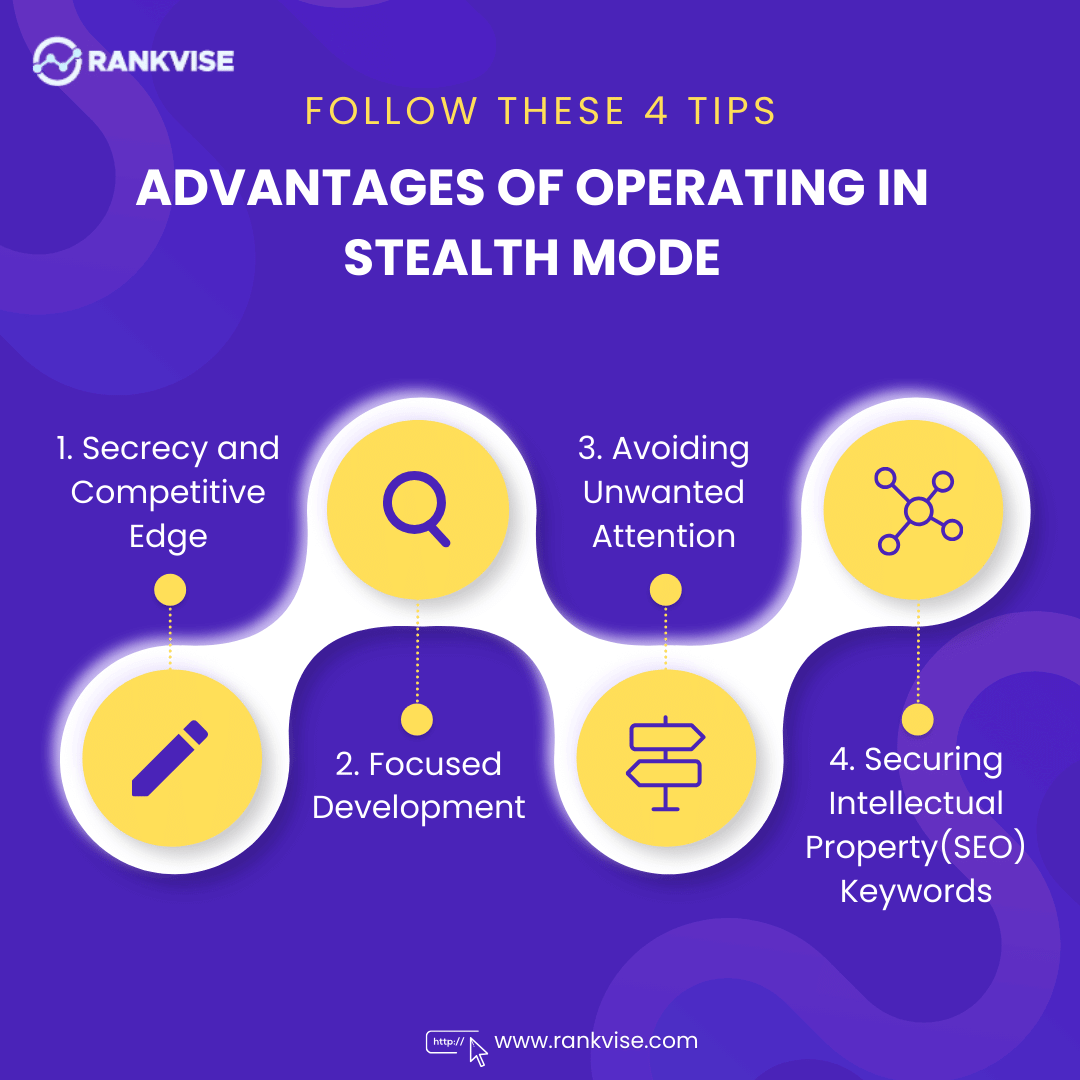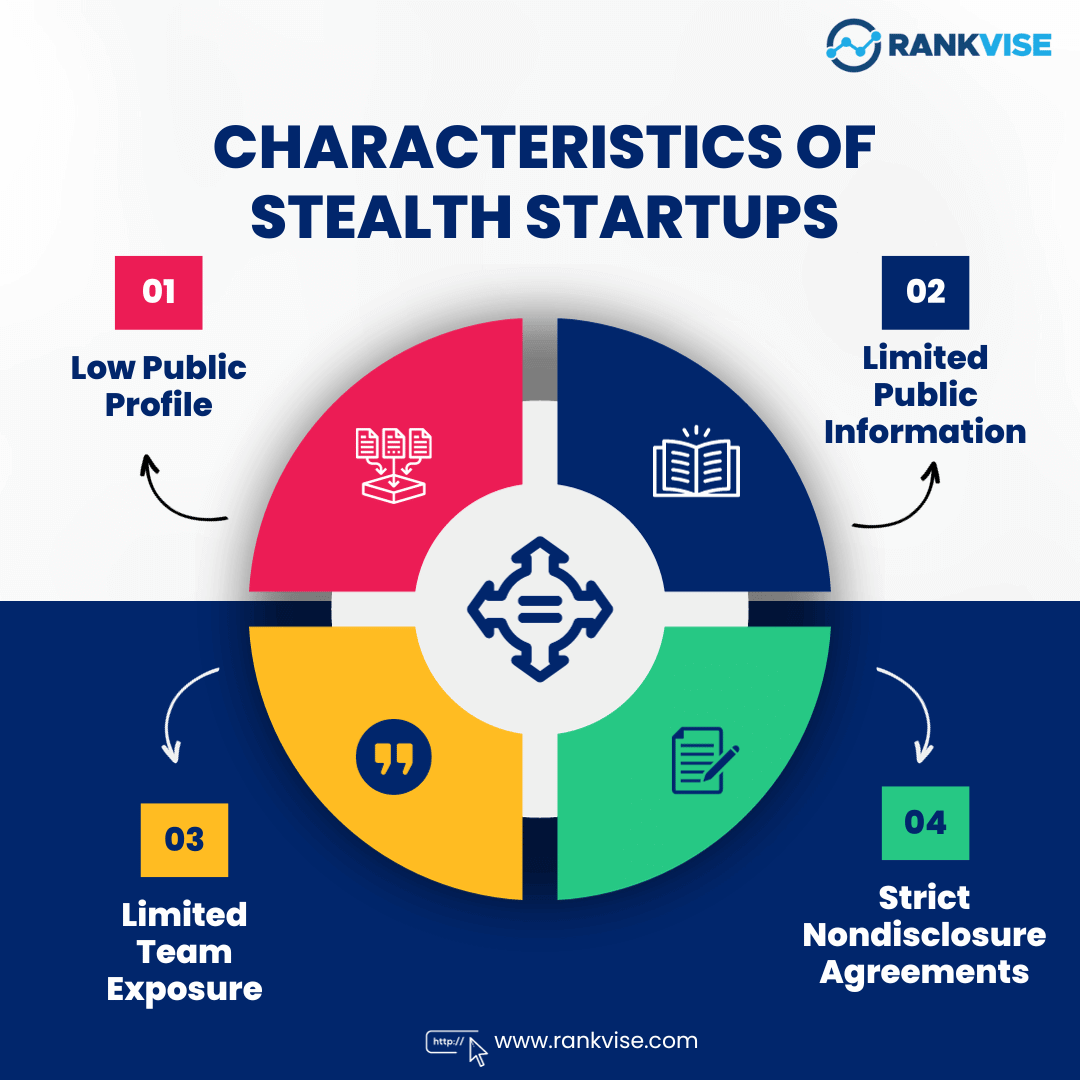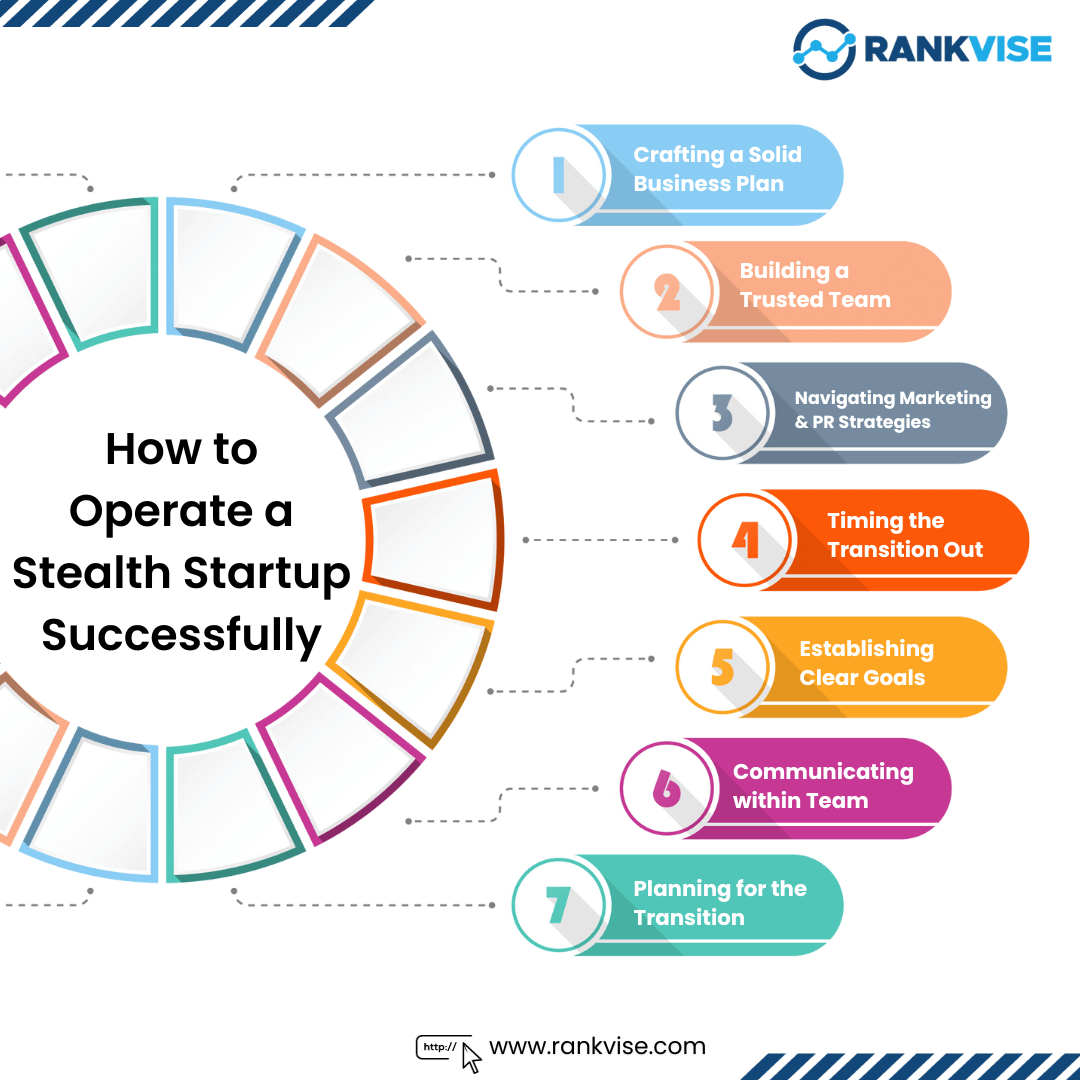In the dynamic landscape of entrepreneurship, where innovation reigns supreme, the term “Stealth Startup” has emerged as a buzzword encapsulating a strategic approach to company development. As the business world becomes increasingly competitive, startups are exploring unconventional methods to gain a competitive edge. This has given rise to the phenomenon of operating in stealth mode, a strategic choice that involves maintaining a low public profile until a carefully chosen moment.
Defining Stealth Startup
A Stealth Startup refers to a company that intentionally operates in secrecy during its early stages, shielding its key developments, strategies, and innovations from the public eye. This intentional cloak of invisibility is not merely about shrouding a venture in mystery but is a deliberate strategy employed for various reasons.
Stealth mode is not just about concealing a startup’s activities but is a calculated decision that offers numerous advantages. This Introduction section will delve into the reasons why entrepreneurs choose to navigate the uncharted waters of secrecy, the advantages it provides, and the intricate balance required to successfully execute this strategy.
As we navigate through this Ultimate Guide, it’s crucial to acknowledge the rising trend of startups opting for stealth mode. From Silicon Valley to emerging tech hubs globally, entrepreneurs are increasingly recognizing the merits of clandestine operations. Whether driven by a need for market research, protection of intellectual property, or a desire to build anticipation, stealth startups are becoming a formidable force in the startup ecosystem.
Advantages of Operating in Stealth Mode
In the fast-paced and competitive realm of startups, the decision to operate in stealth mode is not just a matter of keeping secrets; it’s a strategic move with a multitude of advantages that can significantly impact the trajectory of a company. Here, we delve into the compelling reasons why entrepreneurs choose to shroud their ventures in secrecy during the crucial early stages of development.

1. Secrecy and Competitive Edge
Maintaining a low public profile provides startups with a crucial competitive edge. By keeping their innovations and strategies under wraps, stealth startups can avoid tipping off potential competitors. This clandestine approach enables them to develop groundbreaking solutions without the immediate scrutiny that often accompanies a public presence.
2. Focused Development
Operating in stealth mode allows startups to focus on product development without the distractions and pressures associated with public visibility. This concentrated effort promotes a more meticulous and strategic approach to building a product, free from external noise and premature judgment.
3. Avoiding Unwanted Attention
In the early stages, startups may not be ready for the spotlight. Stealth mode allows them to avoid premature attention from media, competitors, and even potential investors. This intentional avoidance of the limelight gives startups the freedom to iterate and refine their offerings before facing the scrutiny of a wider audience.
4. Securing Intellectual Property
Intellectual property is often a startup’s most valuable asset. By operating in stealth mode, entrepreneurs can protect their ideas, innovations, and proprietary technologies before they are exposed to the public domain. This proactive measure guards against the risk of intellectual property theft or replication.
Characteristics of Stealth Startups
Stealth startups distinguish themselves not only by what they create but also by how they operate. These ventures intentionally navigate the business landscape with a distinct set of characteristics, carefully crafting an aura of mystery around their endeavors. In this section, we unravel the key traits that define the identity of a stealth startup.

1. Low Public Profile
The most conspicuous characteristic of a stealth startup is its deliberate effort to maintain a low public profile. These companies operate in the shadows, minimizing their presence in the public domain to shield their innovations and strategies from unnecessary scrutiny.
2. Limited Public Information
Unlike traditional startups that eagerly share their progress and milestones, stealth startups disclose minimal information about their operations. They carefully control what details are revealed, creating an air of intrigue and curiosity surrounding their projects.
3. Strict Nondisclosure Agreements
To safeguard their intellectual property and sensitive information, stealth startups often enforce stringent nondisclosure agreements (NDAs). These legal documents bind employees, collaborators, and partners to confidentiality, reinforcing the commitment to keeping crucial aspects of the business under wraps.
4. Limited Team Exposure
In contrast to startups that boast about their team members and leadership from the outset, stealth startups maintain a veil of anonymity around their team. Key players often operate behind the scenes, with public-facing roles limited until the strategic moment to emerge from stealth mode.
Reasons Why Startups Choose Stealth Mode
The decision to operate in stealth mode is not arbitrary; rather, it is a strategic choice driven by a variety of compelling reasons. In this section, we unravel the motivations that lead entrepreneurs to embrace the cloak of secrecy during the early stages of their startup journey.
1. Market Research and Validation
Stealth mode provides startups with the freedom to conduct thorough market research without the influence of external opinions. By staying under the radar, these ventures can validate their ideas, iterate on their prototypes, and fine-tune their product-market fit before facing the scrutiny of the broader market.
2. Product Development Without Pressure
The absence of public attention allows startups to focus on product development without the looming pressure of external expectations. This unfettered environment encourages creativity, risk-taking, and the exploration of unconventional solutions, fostering a more organic and robust development process.
3. Building Hype and Anticipation
For certain startups, building anticipation and hype around a product or service is a deliberate strategy. Operating in stealth mode allows them to control the narrative, strategically revealing information at key moments to generate excitement and interest in their offering.
4. Attracting Specific Investors
Stealth mode can be an attractive proposition for investors seeking exclusive opportunities. By limiting public exposure, startups can selectively engage with a targeted group of investors who are willing to invest based on the team’s reputation, vision, and the promise of disruptive innovation.
Challenges and Risks in Stealth Mode
While operating in stealth mode offers numerous advantages, it is not without its set of challenges and inherent risks. In this section, we explore the flip side of the coin, acknowledging the potential hurdles that stealth startups may encounter on their journey and how these challenges can impact their path to success.
1. Limited Feedback
One of the primary challenges of operating in stealth mode is the limited feedback loop. Without a public presence, startups may miss out on valuable insights and perspectives that external stakeholders, customers, or even competitors could provide. This lack of feedback can lead to a potential disconnect between the product or service and the market’s actual needs.
2. Talent Acquisition Challenges
Building a talented and committed team is crucial for any startup, and operating in stealth mode can pose challenges in this regard. Potential team members may be hesitant to join a venture with limited public visibility, impacting the startup’s ability to attract top-tier talent.
3. Maintaining Secrecy
The very essence of stealth mode hinges on maintaining strict confidentiality. However, keeping crucial information under wraps can be challenging in a hyper-connected and information-driven age. The risk of accidental leaks, intentional espionage, or even internal breaches poses a constant threat to the integrity of a stealth startup’s operations.
4. Balancing Stealth with Marketing
Finding the right balance between staying in stealth mode and eventually transitioning to a marketing-oriented approach is a delicate task. Timing is crucial, and misjudging when to emerge from secrecy can lead to missed opportunities or, conversely, premature exposure that dilutes the impact of a launch.
Examples of Successful Stealth Startups
While the concept of operating in stealth mode might seem counterintuitive to the norms of startup visibility, several notable success stories attest to the efficacy of this strategy. we explore instances where startups thrived in the shadows, strategically concealing their operations until the opportune moment for a grand reveal.
1. Palantir Technologies

Palantir, the data analytics company founded by Peter Thiel, operated in stealth mode for several years before becoming widely known. By keeping their work with government agencies under wraps, Palantir was able to develop robust solutions without public scrutiny. When they eventually emerged, their success in the data analytics space was already well-established.
2. Dropbox

Before transforming into a household name for cloud storage, Dropbox operated in stealth mode during its early development. The company discreetly worked on perfecting its file-sharing platform, avoiding unnecessary attention until it was ready for a public beta launch. This strategic approach allowed Dropbox to build anticipation and fine-tune its offering.
3. Magic Leap

Known for its augmented reality technology, Magic Leap maintained an air of mystery during its initial years. The company secured significant investments based on the promise of groundbreaking AR innovations, capitalizing on the allure of the unknown. When Magic Leap finally unveiled its technology, it generated widespread interest and excitement.
4. SpaceX

While SpaceX might be more associated with its high-profile founder, Elon Musk, the company initially operated in relative secrecy. Before its official launch announcement, SpaceX quietly worked on developing cost-effective space travel solutions. The strategic decision to keep a low profile allowed the company to make significant advancements without attracting undue attention.
How to Operate a Stealth Startup Successfully
Operating a stealth startup successfully requires a meticulous and strategic approach. we explore the key considerations and actionable strategies that can guide entrepreneurs in navigating the challenges of stealth mode and emerging triumphantly when the time is right.
1. Crafting a Solid Business Plan
Begin with a comprehensive business plan that outlines your vision, mission, target market, and competitive landscape. A well-defined strategy will serve as a roadmap, guiding your startup through the complexities of stealth mode.

2. Building a Trusted Team
Assemble a team of skilled and dedicated individuals who share your vision and commitment to discretion. Trust is paramount in a stealth startup, and having a cohesive team that understands the importance of confidentiality is crucial.
3. Navigating Marketing and PR Strategies
Despite operating in stealth mode, it’s essential to plan for the eventual transition into the public eye. Develop a marketing and PR strategy that aligns with your product launch timeline. Utilize teaser campaigns, exclusive previews, and controlled information releases to build anticipation.
4. Timing the Transition Out of Stealth Mode
Choosing the right moment to emerge from stealth mode is a delicate decision. Evaluate market conditions, competitor activities, and the readiness of your product. Aim for a strategic transition that maximizes impact and sets the stage for a successful launch.
5. Establishing Clear Goals
Define clear and achievable goals for your startup during the stealth phase. Whether it’s reaching specific product development milestones, securing key partnerships, or conducting stealth marketing campaigns, having well-defined objectives will keep your team focused.
6. Communicating Effectively within the Team
Maintain transparent communication within your team while respecting the need for confidentiality. Establish clear channels for internal communication and ensure that everyone is aligned with the overall mission and objectives of the stealth startup.
7. Planning for the Transition
Anticipate the challenges of transitioning from stealth mode to a public-facing entity. Prepare marketing materials, refine your messaging, and ensure that your team is equipped to handle increased attention. A seamless transition will help maintain the momentum built during the stealth phase.
Tips for Startup Entrepreneurs Considering Stealth Mode
Embarking on the path of operating a startup in stealth mode demands careful consideration and strategic planning.
1. Evaluate the Need for Stealth
Before embracing stealth mode, critically assess whether it aligns with your startup’s objectives. Evaluate if the benefits of confidentiality outweigh potential drawbacks. Not every venture requires stealth, and understanding the specific needs of your business is crucial.
2. Establish Clear Goals
Define clear objectives for the stealth phase. Whether it’s refining your product, conducting market research, or building anticipation, having specific and measurable goals will guide your team and ensure that the time spent in stealth mode is purposeful.
3. Communicate Effectively with the Team:
Foster transparent communication within your team. Emphasize the importance of confidentiality while keeping team members informed about the overall strategy and goals. A united and informed team is essential for the success of a stealth startup.
4. Leverage Nondisclosure Agreements (NDAs)
To protect your intellectual property and sensitive information, implement robust nondisclosure agreements. These legal documents serve as a deterrent to potential leaks and provide a legal framework for maintaining confidentiality.
5. Monitor Competitive Landscape
Stay vigilant about your industry’s competitive landscape. Regularly assess the activities of competitors and market trends. Being aware of external factors will help you adapt your strategy and position your startup for success upon emerging from stealth mode.
6. Strategically Reveal Information
Plan the controlled release of information. Tease key developments, share insights strategically, and leverage exclusive previews to generate interest. Timing and sequencing information releases can play a significant role in building anticipation.
7. Build a Network of Trusted Advisors
Surround yourself with a network of trusted advisors who understand the intricacies of operating in stealth mode. Seek guidance from experienced entrepreneurs, mentors, and industry experts who can provide valuable insights and support.
8. Assess the Investor Landscape:
Understand the preferences of potential investors regarding stealth mode. Some investors may be more inclined to support ventures operating discreetly, appreciating the strategic advantages it offers. Tailor your fundraising approach accordingly.
9. Plan for the Transition
Anticipate the eventual transition out of stealth mode. Develop a comprehensive plan for the public unveiling of your startup, ensuring that marketing materials, messaging, and team readiness are aligned for a seamless transition.
10. Learn from Stealth Success Stories
Study successful examples of startups that have thrived in stealth mode. Analyze their strategies, challenges faced, and the timing of their transitions. Extract valuable lessons to inform your own approach.
Conclusion
The entrepreneurial journey is inherently dynamic, shaped by ever-evolving landscapes and market forces. Whether a startup operates in the limelight or thrives in the shadows, adaptability, resilience, and a keen understanding of industry dynamics are paramount.
In closing, as you chart the course for your startup, consider the intricate interplay between secrecy and revelation. The decision to embrace or eschew stealth mode should align with your business goals, the nature of your industry, and the unique challenges you face. May your journey be guided by strategic wisdom, a resilient spirit, and a vision that transcends the veils of secrecy, propelling your startup to new heights.




